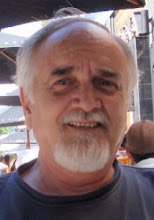Up, Down.


no mention of the name of the kid who fell from the bridge, not clear if he really fell (?), if the bridge was unsafe (?), whatever, creeping illiteracy
registered for two courses at George Brown College, Arabic & Portugese, can't stick them, very like my brief foray into CONA - College of the North Atlantic (was it?) in search of SQL Server a few years ago, so little information being transferred and in such a disorganized fashion that it becomes embarassing just to be there, what I wanted was more-or-less this: Internet Application Developer, but you will notice that it starts in 2010, doh!
easy to blame of course, and ... what will i do now?
discovered a place called Signal Hill in Cape Town, South Africa, and in the process of trying to get a few images i ran across this: Nikki and Gard; seem like lucky people.
One day it is down and out alcoholic heroes and the next it is rich heroes, there is just no telling. Emmanuelle Gattuso & Allan Slaight with more money than they know what to do with put some of it into speeding up breast cancer diagnosis. This is not rocket science y'unnerstan, but who can argue? Still, i have to wonder if people waiting for prostate cancer diagnosis are any less agonized (?) can't say eh? who knows? and a little digging (looking for pics of our heroes) turns up that they also donated the incredibly incredible staircase in the refurbished Art Gallery of Ontario (AGO). Whatever.
Of her, no sign, of him a few:


The real news here is that Canada's health service has been proven categorically not to work without the involvement of rich people ready to push their own agendas - God Bless 'Em!
***************************************************************************
Hospital offers same-day cancer diagnosis, Lisa Priest, May 7, 2009.
Program puts end to an agonizing wait: Hospital offers same-day cancer diagnosis. Patients at leading Canadian facility will also find out right away what course of treatment will be.
Canada's biggest cancer hospital is to announce today a dramatic change for some potential breast-cancer patients: same-day diagnosis, effectively eradicating a 37-day wait and all the anxiety that goes with it.
Patients referred to the rapid diagnostic centre at Toronto's Princess Margaret Hospital will also find out that day what their treatment will be - surgery, radiation and often chemotherapy - all due to a $12.5-million donation provided at a time when many foundations are struggling to raise funds.
Emmanuelle Gattuso, who donated the money with her husband, broadcasting pioneer Allan Slaight, said it was important to her, as a breast-cancer survivor, to make a donation that would help women with the disease today.
"The most stressful thing, really, is the wait time," said Ms. Gattuso, who has recovered after being diagnosed with breast cancer in 2003. "My ultimate dream is that it [rapid diagnosis] happens for every kind of cancer."
Canadian women can wait weeks for a diagnosis of breast cancer after finding a lump. But at Princess Margaret, 494 patients since 2006 have quietly undergone rapid testing as part of a pilot project, including one woman who was diagnosed in three hours.
"When we left, we were shell-shocked, but felt reassured that at least we now knew what we were dealing with," Karen Louie, vice-president, general counsel and secretary at Harlequin Enterprises Ltd., said of the three-hour wait with her husband for a diagnosis. "We had a plan of action we could focus on."
Ms. Gattuso and her husband are leading a campaign to raise a further $12.5-million to expand the program, called the Gattuso Rapid Diagnostic Centre, to 750 patients in 2009-2010, then to 1,500 in 2011-2012, and 3,000 in the pilot program's last phase from 2013 to 2018.
Family physicians refer patients to the program, with those most likely to have cancer being accepted. After a cancer diagnosis, they can opt to have their treatment at Princess Margaret or elsewhere.
The idea for the rapid diagnosis centre came from David McCready, the Gattuso chair in breast surgical oncology and head of the breast site group at Princess Margaret Hospital.
A renowned surgical oncologist, Dr. McCready noticed that patients referred to him for a consultation - from Toronto and elsewhere - waited about 37 days for a diagnosis. Elsewhere, waits can be longer or shorter; the time isn't usually tracked.
When a mammogram reveals a suspicious mass, patients often must navigate a maddeningly cumbersome health care system, each step of which - radiology, pathology, oncology - has its own queue.
And while a wait of 37 days from suspicious lump to diagnosis will not typically compromise a patient's recovery if treatment is prompt, the uncertainty creates enormous anxiety.
Key to rapid diagnosis is obtaining a costly piece of equipment that can prepare tissue for pathological analysis in a matter of hours.
"The main advantage is to get a surgical plan, a treatment plan and be able to plan your life and reduce the anxiety of not knowing," Dr. McCready said.
He stressed that centres across Canada are working to reduce the time it takes to diagnose suspicious lumps.
Some offer quick diagnoses, albeit using fine needle aspiration biopsies, which, while fast, can be inaccurate if the needle is not placed among the cancer cells. The rapid diagnosis program at Princess Margaret will use core biopsies, which take more tissue and therefore are more likely to provide a clear diagnosis.
"Within the city, within the province, within the country and within North America, almost every place is trying to do what they can to speed things along," Dr. McCready said. "In an ideal situation, if we can see the patient at 8 or 9 in the morning and have the biopsy at 10, by 1 o'clock or so we've got a pathologic diagnosis from the biopsy."
Paul Alofs, president and chief executive officer of the Princess Margaret Hospital Foundation, said he hopes other centres can replicate the service and that it can be expanded to other kinds of cancer.
"It's our hope that we'll be able to start in breast cancer and that in five to 10 years this will become the standard of care throughout Ontario and maybe other places as well," Mr. Alofs said.
In the meantime, patients such as Ms. Louie, 51, are reaping the benefits of same-day diagnosis and getting on the treatment track faster.
After being diagnosed with early-stage breast cancer in May of 2008, she underwent surgery, chemotherapy and radiation.
"I had a diagnosis and a plan of action, which to me is nothing short of amazing," she said.
***
Treatment alternatives
The traditional way
The patient whose mammogram reveals a lump suspected of being cancer is sent to a health-care facility for a core biopsy.
The tissue is sent to a laboratory to be prepared for analysis, which typically is an overnight process. At some point afterward, the pathologist analyzes it and provides a diagnosis.
The diagnosis is sent to the doctor who referred the patient, in some cases their family physician, in others, a surgeon.
The doctor makes an appointment for the patient to return for the result.
Patients who receive a diagnosis of breast cancer from their family doctor may then wait several days to weeks before they see a surgeon.
Total time: Several weeks
rapid diagnosis program
The patient arrives at the Gattuso Rapid Diagnostic Breast Cancer Centre for an initial consultation between 8 and 10 a.m.
Further imaging is performed if required.
A core biopsy is usually performed.
The tissue goes into the rapid tissue processor and is ready within hours for a pathologist to analyze it.
The pathologist reports the result that afternoon.
A member of the surgical oncology team tells the patient whether the findings are malignant or benign.
For patients with malignant findings, a treatment plan is provided: typically a combination of surgery, radiation and sometimes chemotherapy.
Total time: 6 to 8 hours
Source: Princess Margaret Hospital
Down.




No comments:
Post a Comment